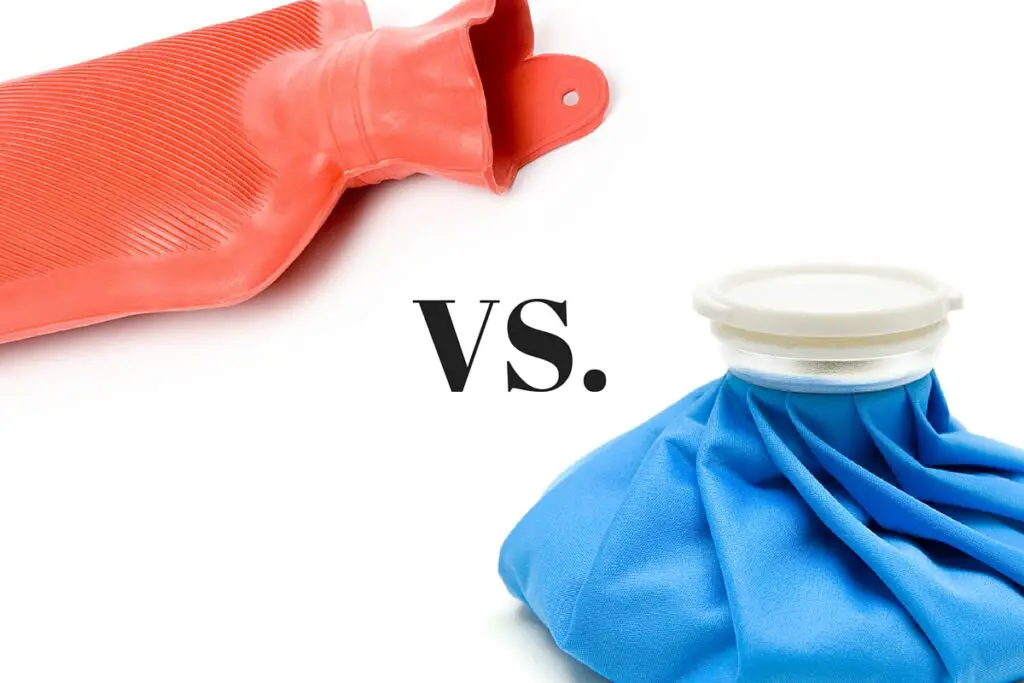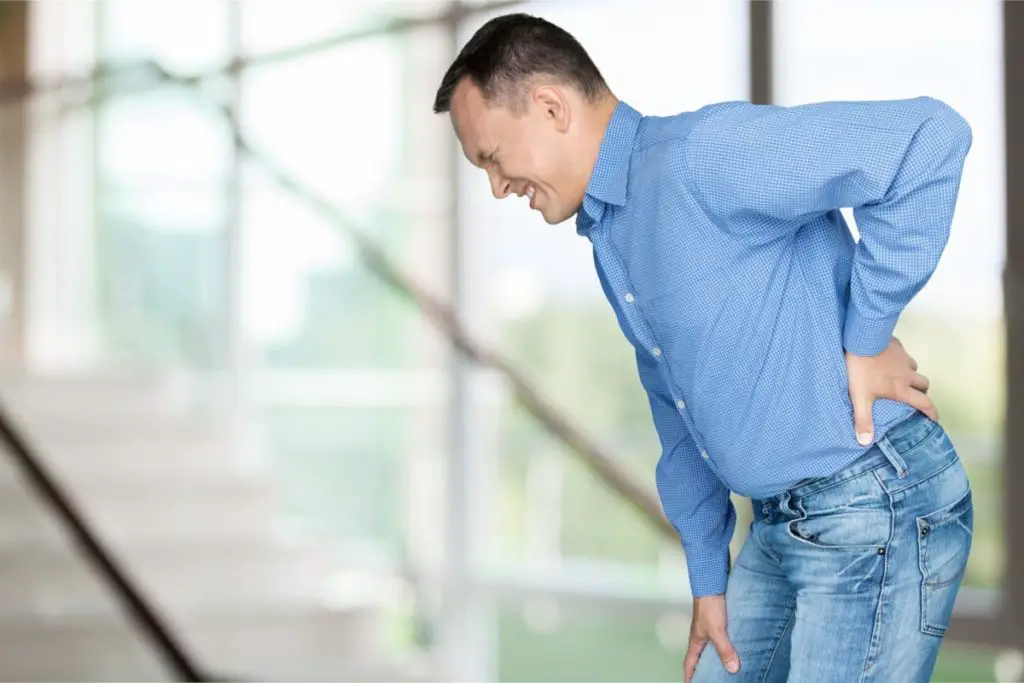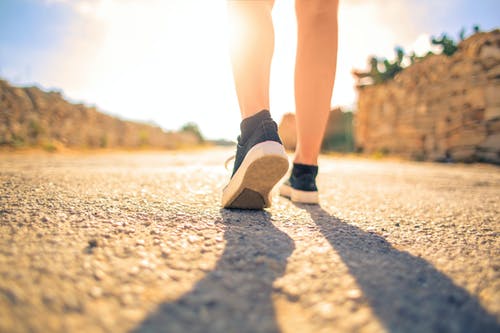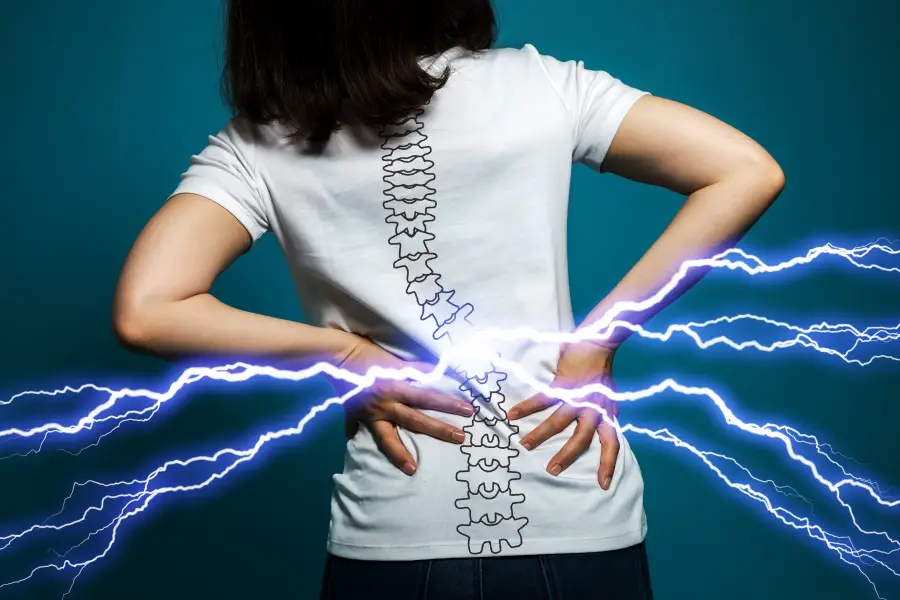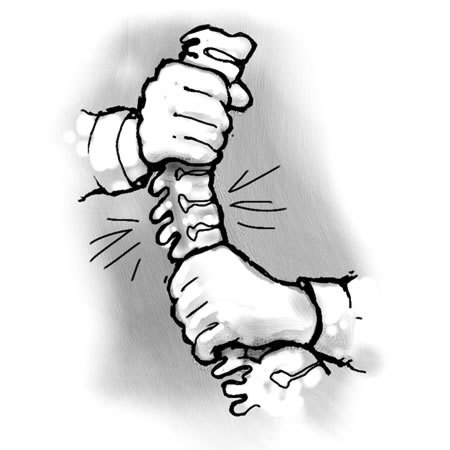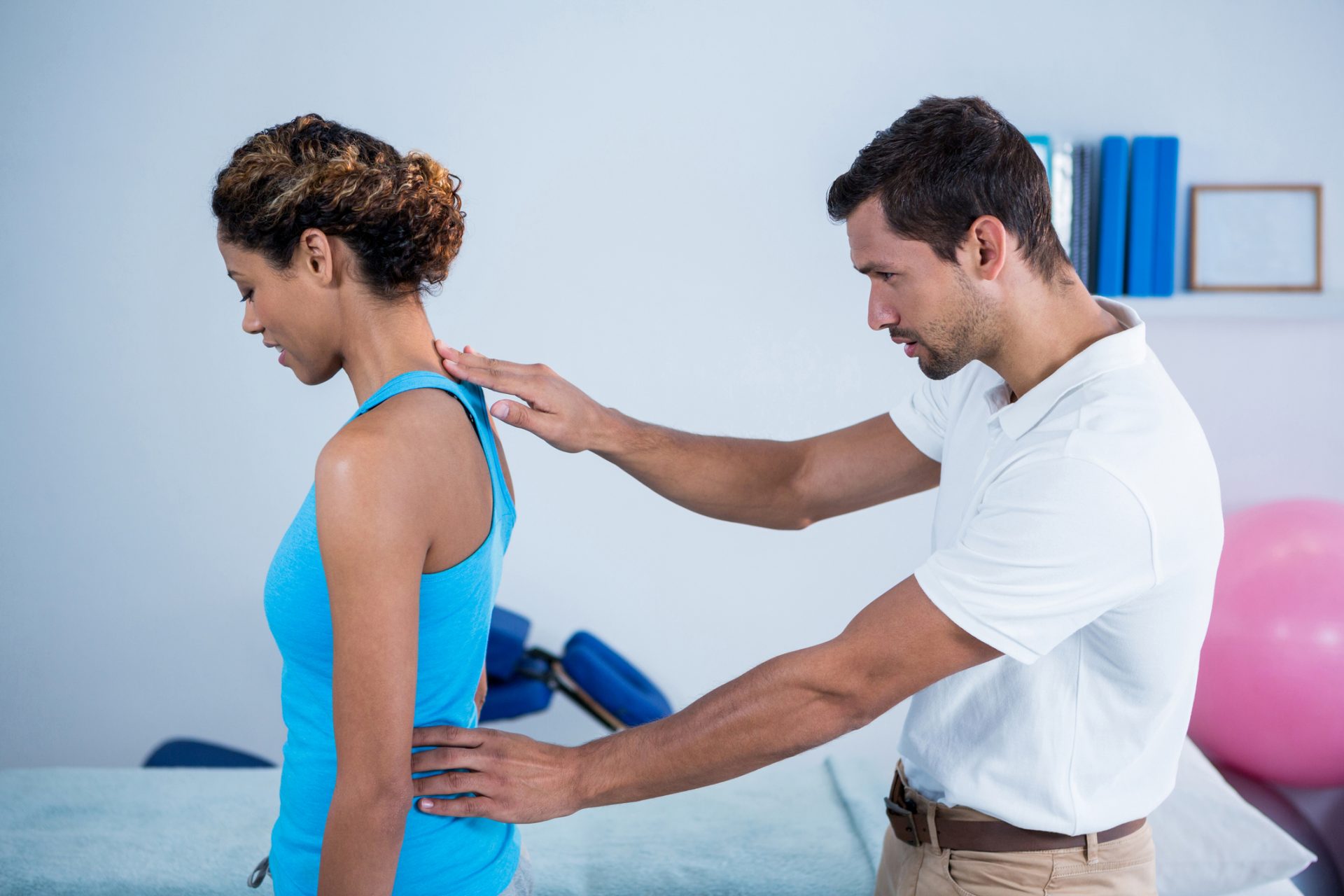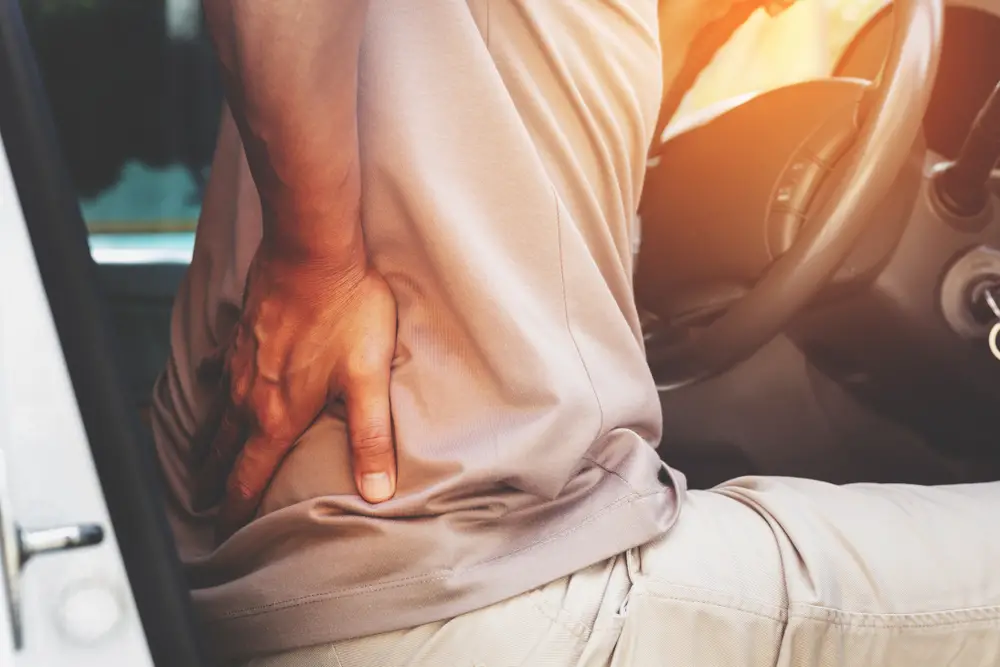Article reviewed and approved by Dr. Ibtissama Boukas, physician specializing in family medicine
Hot or cold after a lumbago (or other muscle pain)? This is the question that almost all my patients ask me following an episode of acute lumbago, sciatica, cruralgia, herniated disc, etc.
As everyone wishes avoid medication and other invasive treatments (such as seepage or surgery), many are turning to more natural methods to relieve their lumbago.
If you're reading this article today, you've probably heard conflicting answers. Hot or cold ? Ice or heat? How to choose after a lumbago? How long do these terms have to be applied? What are the risks ? In short, what to do concretely?
For those who have lower back pain, I will explain the difference between hot and cold to relieve your symptoms of lumbago or muscle pain, in light of the best current recommendations.
Hot or cold: Why so many contradictions?
Your colleague tells you that he has warmed up following his episode of lumbago (heating bag or hot water bottle). Another tells you that it was the cold (ice compress) that relieved his sciatica.
Even if you ask for the opinion of health professionals, you will find conflicting answers.
Why ? It's simple… there is JUST no right answer!
If we rely on scientific evidence, current studies are unfortunately not of high quality. And if we look at the conclusions of these studies, we see varied conclusions, and even contradictory.
In some studies, it is the ice which seems more effective following lumbago.
In others it is the heat that demonstrates the most benefits.
Believe it or not, but there are also studies where none of these modalities have been shown to be effective!
What can we conclude? First, that you should not rely solely on the conclusions of a single study when looking for solutions to relieve your back pain. (This is the strategy used by several quacks, but I'd rather not go that route at the moment).
Second (and this is what interests us here!) is that each person reacts differently to the various treatments available. So there really is only ONE way to choose between hot and cold for your pain. after acute lumbago… it's'try for yourself !
Well, we can still make some recommendations depending on your condition. To do this, let us first examine the theoretical effects ice, then heat. This will allow us to assess the risks and possible options in order to optimize their use after lumbago.
Cold in case of lumbago
In the case of ice, the theoretical objective is to reduce the temperature in the lower back region in order to obtain a desired biological response. Among the targeted therapeutic effects, we have:
Hypothetical mechanism of cold:
- Slowing of metabolism
- Vascoconstriction
- Slowing of nerve conduction
- Decreased body temperature
- Numbing effect
- Reduction of edema
- Decreased muscle spasms
Now there is a great debate around inflammation following an injury. Specifically, we used to think inflammation was bad, and needed to be treated as aggressively as possible. It is for this reason that we prescribe non-steroidal anti-inflammatory drugs (NSAIDs), that we do cortisone injections, or that patients are offered ice cream for its anti-inflammatory effect.
On the other hand, we realized that inflammation was not only useful, but necessary for healing optimal tissue. This is also the reason why many doctors prescribe less and less NSAIDs or infiltration.
Now the inflammation is often associated with pain through its various mediators. This (temporary) tissue sensitization sometimes prevents us from moving, sleeping, or going about our business.
For this reason, it is sometimes useful to minimize inflammation to allow the body to benefit from the other modalities necessary for a good healing of the back (physical activity, sleep, favorable mood, etc.).
It is with this in mind that the cold can reduce inflammation following lumbago (in addition to other therapeutic effects), thus helping to relieve your symptoms in the lower back.
Heat in case of lumbago
Heat is often recommended to relieve lumbago (and other muscle pain). It is also the number one reflex of people as soon as they feel pain in their back. Here are the therapeutic effects targeted by the application of heat:
Hypothetical heat mechanism:
- Acceleration of tissue metabolism (therefore acceleration of healing)
- Vasodilation (therefore bringing oxygen and nutrients to your tissues)
- Relaxation and muscle relaxation
- Increase in flexibility
- Increased body temperature
- Action on thermal receptors
- Blocking action of nociceptors (pain sensory receptors)
The risks ?
The risks associated with the use of heat and ice are rare. However, they should not be minimized, especially if you have skin or blood circulation problems. Here is a (non-exhaustive) list of conditions imposing particular measures:
Caution when applying ice or heat
- Any cardiovascular problem
- Any dermatological problem
- Peripheral vascular disorders (hemoglobinuria, diabetes, etc.)
- Raynaud's disease
- cold urticaria
- The elderly
Let me tell you one horrible story related to the use of ice cream. An elderly woman had sprained her ankle, then phoned her physiotherapist (physiotherapist) for advice. Here are the exact words used by the therapist:
"Put your foot in freezing water until we see each other."
Guess what ? The patient prepared a tub of cold water, added several ice cubes to it, then put his foot in it…all night long!
result: foot amputation due to tissue necrosis. Of course, the physio meant to use cold INTERMITTENTLY until the patient's next appointment. This did not prevent him from losing his therapist's license forever...
Well let's get back to our lumbago, and the role of hot and cold to relieve you. Admittedly, the adverse effects are (usually) minimal, but here is what has been documented in the scientific literature:
- Redness of the skin
- slight burning
- muscle inhibition
- (Temporary) reduced mobility
- Cold intolerance
Practical application following lumbago
I have to put the hot or the cold during How long after an episode of lumbago?
Currently, there are no official recommendations suggesting a specific application time for heat or ice. Here are the things to keep in mind when applying these terms:
For the ice cream:
- If you have a short stature (low fat percentage, small frame, etc.), the ice application time should be less to avoid adverse effects.
- Cold-induced vasoconstriction appears to be followed by vasodilation of blood vessels after about 10 minutes. This is a body protection reaction to avoid tissue hypoxia (called lewis reaction). Thus, if you only want a slowing down of the metabolism during an inflammatory period (after a lumbago, for example), you should not exceed 10 minutes.
- If the goal is only to reduce pain, without necessarily having therapeutic effects (such as slowing down the metabolism), you don't have no need to hold the ice for a long time. Why ? Because the objective in this case will only be to desensitize your brain and your nerves, without looking for the physical effects (like the reduction of swelling). This desensitization can be done relatively quickly, and does not require intense cold.
- Not all ice packs are created equal. Some provide a more intense feeling of cold compared to others. Immersing yourself in freezing water is not the same as putting a cold water towel on your back. This is also the reason why it is necessary modulate the treatment time according to the intensity of the cold. In hierarchical order from coldest to least cold, here are examples of therapeutic modalities:
Ice water immersion → Bag of ice cubes → Bag of frozen vegetables → Gelpack → Sprays and ointments
- Instead of applying ice for long consecutive minutes, you could apply it in alternating with rest periods. More concretely, instead of putting an ice pack down for 20 minutes following an episode of lumbago, consider putting it down for 10 minutes followed by a short rest period (10-15 minutes), then putting the ice back down for another 10 minutes. This will also help avoid the Lewis reaction discussed above.
- For people at a little higher risk (circulatory problems, elderly people, etc.), additional precautions should be taken when applying cold:
- Reduire the application time
- Place an intermediary in the skin and the ice/heat (for example a towel)
For heat:
For heat, there are also various therapeutic modalities available. A common treatment is balneotherapy. This involves physical exercise in the pool, often in water between 32 and 38 degrees Celcius.
Other thermal modalities available on the market are:
- heat bag
- Pads and heating pads
- Heating belts
- Ultrasound, Shockwave, Infrared Radiation: It should be noted that there is very little evidence supporting their use in the treatment of low back pain.
- Etc
As for the heat packs, it is recommended to put them on your lumbar region for 15-20 minutes. As with ice, the application time must be adjusted according to your stature and associated medical conditions.
If the aim is to increase circulation, we must never forget that physical exercise is THE modality of choice to increase blood circulation.
alternatives
Although often effective, applying heat or ice to the lower back is not the only way to treat back pain.
If you have already tried cold compresses or a heating bag, but they have not succeeded in calming your pain, you should not stop there! Indeed, there are many natural solutions aimed at relieving back pain without resorting to medication, infiltration or surgery.
In addition, there are several products and accessories available on the market to relieve lower back pain. It should be remembered that these tools generally provide temporary relief, and should be used sparingly. Among the products recommended by our professionals, we have:
- acupressure mat
- Heated lumbar belt
- Postural T-Shirts
- Ergonomic back cushion
- massage gun
- Spinal decompression table
What about natural remedies?
Although they are not supported by solid scientific evidence, several natural products and grandmother's remedies are used to treat pain related to lumbago, in particular for their anti-inflammatory power.
Here is a non-exhaustive list of plants and essential oils that are effective in controlling pain and inflammation. The products are available on the site Country. Use promo code LOMBAFIT15 if you wish to obtain one of the following products, or any remedy aimed at relieving your symptoms and improving your quality of life:
- Turmeric. Thanks to its antioxidant and anti-inflammatory powers very powerful, turmeric is one of the most used plants in a culinary and therapeutic context. The composition of turmeric is essentially made of essential oils, vitamins (B1, B2, B6, C, E, K) and trace elements. But it is to its composition rich in curcumin and curcuminoids that we owe them and calm skin of this spice.
- Ginger. In addition to the special flavor it brings to the kitchen and its aphrodisiac properties, ginger is a root well known for its anti-inflammatory powers. the gingerol gives it its anti-inflammatory action. It is an active component acting on the inflammatory pain related to chronic joint inflammatory diseases, including rheumatoid arthritis, lupus, rheumatic diseases, etc. It has been proven that this active element is also effective in acting on the inflammation linked to arthritis and sciatica. Ginger also has other benefits thanks to its high potassium content and its richness in trace elements (calcium, magnesium, phosphorus, sodium) and vitamins (provitamin and vitamin B9).
- Omega-3s. Omega-3s are polyunsaturated fatty acids that play a very important role in the functioning of our body. They are provided by food in three natural forms: docosahexaenoic acid (DHA), alpha linolenic acid (ALA) and eicosapentaenoic acid (EPA). Beyond their action on the brain and the cardiovascular system, omega-3s prove very effective against inflammation. Indeed, they have the ability to act on the inflammatory mechanisms in osteoarthritis by slowing down cartilage destruction, thus they reduce the intensity of osteoarthritis pain. Sciatica, being most often linked to an inflammation secondary to a herniated disc, it can also respond to omega-3 provided it is consumed regularly.
- Lemon eucalyptus. Eucalyptus is a plant most often used in the form of herbal tea or essential oil. She would have anti-inflammatory effects which give it the ability to act on the bone and joint pain in general and the pain of sciatica in particular.
- wintergreen. Wintergreen is a shrub from which a very interesting essential oil is extracted. It is one of the most used essential oils in aromatherapy. This oil extracted from the shrub bearing the same name, is used in massage to relieve sciatica and act like a analgesic. Indeed, it provides a heating effect thanks to its ability toactivate blood circulation locally.
Conclusion
So! I hope you are now better able to choose between hot and cold to relieve your lumbago.
As mentioned earlier, there is no right answer. To know which of the two is the most effective in your case, it is advisable to go there by “trial and error” in order to determine which relieves you the most.
In general, I recommend cold to my patients following an acute episode of pain in the lower back (such as lumbago), and heat in more chronic cases or if muscle relaxation is sought (muscle pain).
There are several bags, ointments, sprays and others on the market. Some offer better value for money, but not necessarily greater relief from your back pain.
Either way, never forget that heat and ice, like all passive modalities in general, should be used as an adjunct to an active approach. Thus, it is necessary at all costs to bet on physical exercise (dosed and adjusted to your condition) to optimize the healing of your lumbago over the long term.
Good recovery!
My name is Anas Boukas and I am a physiotherapist. My mission ? Helping people who are suffering before their pain worsens and becomes chronic. I am also of the opinion that an educated patient greatly increases their chances of recovery. This is why I created Healthforall Group, a network of medical sites, in association with several health professionals.
My journey:
Bachelor's and Master's degrees at the University of Montreal , Physiotherapist for CBI Health,
Physiotherapist for The International Physiotherapy Center

